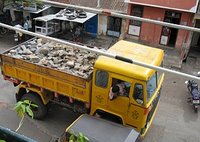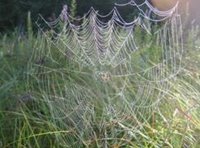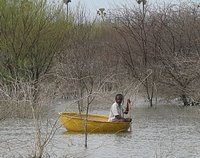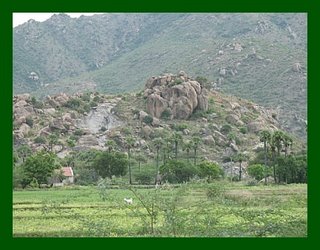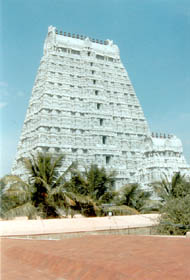 Swami Narayana, also known as Hill Swami, lived continuously on the top of Arunachala for some 16 years. On April 19th, 2005 he was asked to shift from Arunachala summit (with his assistants). This he did and relocated to the grounds of the Ganesha Polytechnic some 5-6 kms from the base of the Hill. Public opinion ensured Swami was awarded special dispensation by the Authorities to recommence his vigil on the Hill summit and within a week of his enforced departure, Swami returned to his spot on the top of Arunachala.
Swami Narayana, also known as Hill Swami, lived continuously on the top of Arunachala for some 16 years. On April 19th, 2005 he was asked to shift from Arunachala summit (with his assistants). This he did and relocated to the grounds of the Ganesha Polytechnic some 5-6 kms from the base of the Hill. Public opinion ensured Swami was awarded special dispensation by the Authorities to recommence his vigil on the Hill summit and within a week of his enforced departure, Swami returned to his spot on the top of Arunachala.
However on July 17th, 2005 Swami Narayana became ill and had to be helped down Arunachala Hill by devotees. He was admitted to Rangamma Hospital, Tiruvannamalai. Whilst at the hospital Swami received treatment and physiotherapy for arthritic knee joints, a condition brought about by his intense tapas over the last sixteen years at the summit of Arunachala Hill. Swami, who was attended by several devotees, and accommodated in a private Bungalow at the Hospital, maintained almost total silence during his stay and took no food, choosing to subsist entirely on milk.
Before his departure from Rangamma Hospital on 29th July, 2005, Swami remarked:
I have been sitting on Arunachala Hill for all these years allowing people to serve me, now it is time for me to stand up and serve others.
At his departure Swami raised both hands in blessings and uttered the word, Narayana. These few words were almost his total communication during his twelve day Hospital stay. After his discharge Swami left the Arunachala area and is believed to have moved near Tuticorin with some close devotees.
Swami has now decided to share his time between stays at Kerala and Tiruvannamalai. He returned to Tiruvannamalai about 2 weeks ago and is expected to remain for another 6 weeks, afterwhich time he will return to Kerala for a short visit.
Whilst at Tiruvannamalai Swami is staying at Vignesh Polytechnic Hostel on Thandrabuthu Road near Tamari Nagar Housing Colony. Swami is giving his darshan twice a day and is accessible to Indian devotees out of college hours. However it is not known at this time whether he is available to Western Pilgrims.



